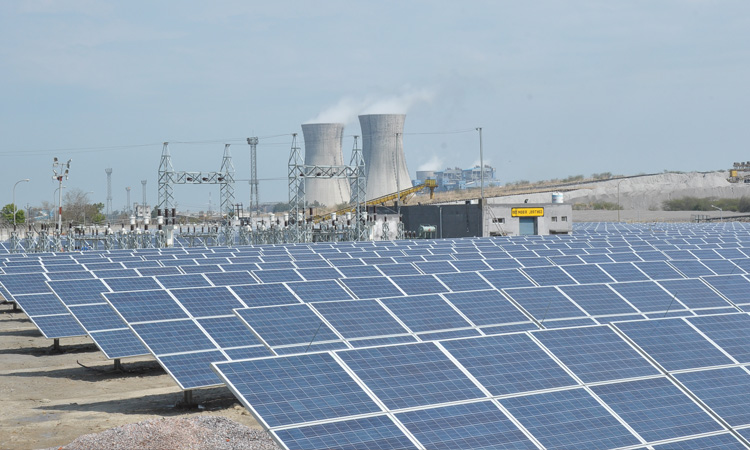It has never been an easy ride navigating India’s power industry. With a combination of central and state government mandates, changing electricity tariff models, and rapid reforms, the regulatory environment is often like a moving target. For those involved in electric power distribution, generation, transmission, and EPC projects, adjusting to this complexity is both challenging and imperative.
But as is always the case with this dynamic environment, there are a lot of things that one can learn, a lot that can help to illuminate how companies like Hartek have translated this ambiguity of regulation into a competitive advantage. The article contributes to practical research on the Indian power sector analysis, as it is informed by hands-on experience and sensible knowledge of the methods to manoeuvre through the evolving laws and generate sustainable developments.
The Ever-Changing Landscape of Indian Power Sector Regulations
India’s power sector has undergone significant transformation over the past two decades. With the push for renewable integration, the emergence of open access models, and decentralised energy systems, the regulatory frameworks have struggled to keep pace with technological advancements and market demands.
Fragmentation in regulation is one of the most basic issues of concern. Though a core set of regulations governing calculation and allocation of Revenue-and Cost-Based Rates and Decoupling was assigned by the Electricity Act, 2003, delays in implementation and progress made by the individual states beyond this are creating a quilt work of regulations since variedly applied to multiple geographical jurisdictions. Not only being in conformity with the laws, working within this terrain comes with operational wiggle room and even a strategic perspective.
For infrastructure and EPC firms, complexity is further accentuated. Each EPC project has more than one licensing requirement, environmental clearances, and state and central agency coordination. On the way from conception to commissioning, regulatory approvals can break or make timelines.
Electricity Tariff in India: A Shifting Policy Pillar
While electricity tariff in India is supposed to be indicative of cost recovery and support affordability, the actual situation is usually a give-and-take between populist interests and fiscal prudence.
Tariffs are not merely a commercial parameter; tariffs are a regulatory announcement. Non-uniform or tardy tariff revisions have harmed the financial health of DISCOMs (Distribution Companies), impacting the entire value chain of the electricity sector.
For example, delays at the state level in filing Annual Revenue Requirements (ARR) and obtaining tariff orders have caused under-recoveries and revenue shortfalls. Cross-subsidisation, too, where industrial consumers pay a premium to cross-subsidise residential or agricultural consumers, distorts market signals and discourages investment in electric power distribution.
This is of direct significance to project feasibility and investor confidence from an EPC point of view. Repeatable and clarified tariff arrangements are a necessity in long-range infrastructural planning, especially in regard to renewable consolidation and network reinforcement.

Handling Multi-State Licensing Requirements: Learnings from the Ground
The absence of standardization in state-to-state licensing standards is one of the under-represented concerns. Depending on the country’s speed of getting right-of-way (RoW ) approvals, managing state electricity regulatory commissions (SERCs), or even approving grid connectivity, each state varies in terms of how this is done.
Companies working on EPC projects across two or more states often suffer redundancy of documents, a lack of coordination among nodal agencies of different states, and an unpredictable rate of clearances. It may not be okay to apply what is fitting in Punjab in Tamil Nadu or Maharashtra. The absence of a harmonized framework implies a high compliance cost and a delay in the implementation of projects.
Hartek has tackled this issue by adopting a compliance-first model. By instituting special regulatory liaison teams that possess specific knowledge about the state, the company has managed to reduce the turnaround time and also improve the efficiency of its project deliveries. This proactive participation scheme is one lesson that the industry can pick up.
Energy Sector Reforms in India: A Mixed Bag
Some recent reforms in India’s energy sector, like promotion of smart metering, privatisation of Union Territory DISCOMs, and introduction of the Revamped Distribution Sector Scheme (RDSS), have focused on improving efficiency and accountability. Ground-level execution has been erratic, though.
Smart metering penetration, for example, is encouraging in urban areas but is still trailing behind in rural areas. While RDSS advocates for financial sustainability through infrastructure improvement, the release of funds and performance-incentive-linked funding still experiences bottlenecks.
Such reforms that are ambitious can be equated to aligning policy intent and implementation. To the stakeholders like Hartek, it not only means to be aligned to the overall vision, but also resonates with the case of working closely with the utilities across the state level so that the solutions can be co-developed to meet both the technical and local governance requirements.
Important Lessons
1. The risk management of regulatory risks should be an inseparable part of the project planning.
Instead of taking the regulations as an extrinsic factor, companies should include compliance as one strategic approach in companies. This entails legal foresight, policy change in advance notice and flexible planning.
2. Be an Early and Proactive participant in the Regulatory Bodies
Early engagement can be a means of finding out early what the regulators and policymakers are up to and of reducing the threat of last-minute dislocation, rather than waiting until regulations have been finalised.
3. Design Commercial Models to be Flexible
With the electricity tariffs constantly varying in nature, companies should come up with Power Purchase Agreements (PPAs) and pricing strategies that can withstand the moderate swing in the cost structure.
4. Strategy is State Specific
There is no off the shelf solution to India. Only through the understanding of the particular administrative and political situation in every state can the implementation and buy-in of stakeholders be made smooth.
5. The DDD enhances Resistance to Data-Driven Decision-Making
By investing in their digital technology and analysis, businesses are able to see more clearly how the project will be, in terms of regulatory impact, and increase resource planning across the age span of the project.
The Way Forward: Clarity Through Collaboration
A truly effective Indian power sector analysis acknowledges that India’s clean energy goals cannot be achieved without addressing regulatory bottlenecks. The solution isn’t to eliminate regulations, but to rationalise and harmonise them. Coherent regulations, transparent electricity tariff in India policies, and coordinated interstate policies are key to unlocking massive investments and innovation.
For Hartek, the complexity is not a hindrance, it’s a strength. By confronting it with structure, knowledge, and adaptability, the company continues to deliver across transmission, electric power distribution, renewables, and smart grid projects under evolving regulatory conditions. That’s how leadership is sustained.
Conclusion
The Indian power sector analysis reveals one undeniable thing, regulatory complexity is not going away. That does not mean that it should be a barrier, however. This chaos can be transformed into clarity, through good systems, strategic thinking and a collaborative nature. Firms who invest in regulatory intelligence, engagement with stakeholders, and dynamic planning will end up in a position of maximum advantage to excel in this new environment of the energy transition in India.
We believe we are building the future of power at Hartek not just in terms of infrastructure, but with insight, innovation and integrity.
FAQ’s:-
1. What are the major regulatory challenges in the Indian power sector?
The Indian power sector faces complex regulations due to fragmented state and central policies, frequent reforms, and evolving tariff models.
2. Why is electricity tariff a major concern in Indian power sector analysis?
Electricity tariff impacts cost recovery and investor confidence, and inconsistent state-level updates hinder power project viability.
3. How do EPC companies manage regulatory risks in India?
EPC firms adopt proactive compliance, legal foresight, and state-specific strategies to navigate licensing and approval complexities.
4. What lessons can be drawn from Indian power sector reforms?
Key takeaways include early regulatory engagement, flexible commercial models, and alignment with state governance structures.
5. How is Hartek adapting to India’s changing power sector regulations?
Hartek leverages regulatory intelligence and localised compliance strategies to drive innovation in power distribution and transmission.





